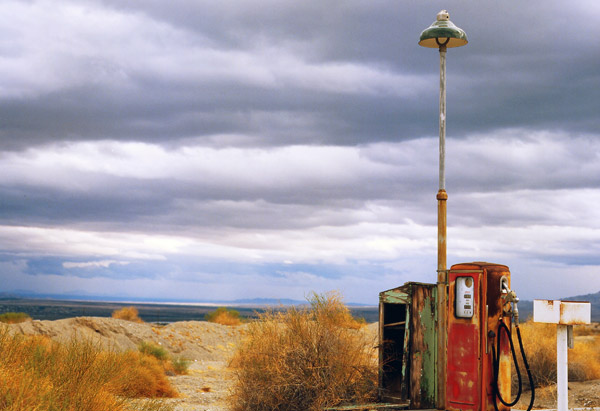7 Ways to Spend Less on Gas (and 3 Ways Not To)
We've got the gas-saving techniques you should adopt today—and some you should steer clear of.

Photo: Thinkstock
Do: Tighten Your Gas Cap
"Last year, 147 million gallons of gas evaporated because of loose, missing or broken gas caps," says Lauren Fix, aka the Car Coach and the national automotive correspondent for Time Warner Cable. By paying attention at the pump and turning the cap until it clicks, your dollars won't float into thin air.
Do: Get the Junk Out of Your Trunk
If your car looks like a closet on wheels, it's time to clean it out. That extra storage space doesn't come free.
"For every 100 pounds, you lose a mile per gallon," says Ben Wojdyla, Popular Mechanics' associate auto editor. This includes excess weight outside the car (bike racks, rooftop racks) too.
Do: Turn Right—and Only Right
In the early 2000s, UPS employed new routing software to increase the efficiency of its delivery fleet and reduce fuel consumption. By eliminating as many left-hand turns as possible, UPS has saved an estimated 10 million gallons of gas in the past eight years.
What makes the rule so effective? Before making a left-hand turn on a busy two-way street, you usually wind up idling—getting 0 mpg. Right-hand turns keep you moving.
Do: Download a Gas-Saving App
Smartphone apps like GasBuddy—which has been downloaded more than 371,000 times—find the cheapest gas near you (and let you to report gas prices to help others). GasBuddy's Trip Cost Calculator advertises savings of $4.81 on a 690-mile round trip between Chicago and Cleveland.
Don't: Warm Up Your Car for Several Minutes
Drivers in snowy, cold locales know the rule: Always (always) warm up your car. But this means an idling engine. This just isn't necessary with modern engines. A car with a fuel-injection system—basically any car made in the last 20 years—can warm up while you're driving. California's Consumer Energy Center recommends only 30 seconds of idling, even on winter days. "As soon as the gauges are up and where they're supposed to be, you should take off," Fix says.
Do: Put On the Air Conditioning
Another bedrock truth: Air conditioning wastes too much gas. Except...this one isn't true either. "Cars are designed in such a way now that when you put on your air conditioning, it doesn't put a draw on the engine, so it doesn't use more fuel," Fix says. In fact, in recent models, choosing air conditioning is a more fuel-efficient option than rolling down windows, which increases the drag on the car, Wojdyla says. (This may not be the case for vehicles made before the mid-'90s.)
Next: Why you shouldn't ride around on empty
"Last year, 147 million gallons of gas evaporated because of loose, missing or broken gas caps," says Lauren Fix, aka the Car Coach and the national automotive correspondent for Time Warner Cable. By paying attention at the pump and turning the cap until it clicks, your dollars won't float into thin air.
Do: Get the Junk Out of Your Trunk
If your car looks like a closet on wheels, it's time to clean it out. That extra storage space doesn't come free.
"For every 100 pounds, you lose a mile per gallon," says Ben Wojdyla, Popular Mechanics' associate auto editor. This includes excess weight outside the car (bike racks, rooftop racks) too.
Do: Turn Right—and Only Right
In the early 2000s, UPS employed new routing software to increase the efficiency of its delivery fleet and reduce fuel consumption. By eliminating as many left-hand turns as possible, UPS has saved an estimated 10 million gallons of gas in the past eight years.
What makes the rule so effective? Before making a left-hand turn on a busy two-way street, you usually wind up idling—getting 0 mpg. Right-hand turns keep you moving.
Do: Download a Gas-Saving App
Smartphone apps like GasBuddy—which has been downloaded more than 371,000 times—find the cheapest gas near you (and let you to report gas prices to help others). GasBuddy's Trip Cost Calculator advertises savings of $4.81 on a 690-mile round trip between Chicago and Cleveland.
Don't: Warm Up Your Car for Several Minutes
Drivers in snowy, cold locales know the rule: Always (always) warm up your car. But this means an idling engine. This just isn't necessary with modern engines. A car with a fuel-injection system—basically any car made in the last 20 years—can warm up while you're driving. California's Consumer Energy Center recommends only 30 seconds of idling, even on winter days. "As soon as the gauges are up and where they're supposed to be, you should take off," Fix says.
Do: Put On the Air Conditioning
Another bedrock truth: Air conditioning wastes too much gas. Except...this one isn't true either. "Cars are designed in such a way now that when you put on your air conditioning, it doesn't put a draw on the engine, so it doesn't use more fuel," Fix says. In fact, in recent models, choosing air conditioning is a more fuel-efficient option than rolling down windows, which increases the drag on the car, Wojdyla says. (This may not be the case for vehicles made before the mid-'90s.)
Next: Why you shouldn't ride around on empty



